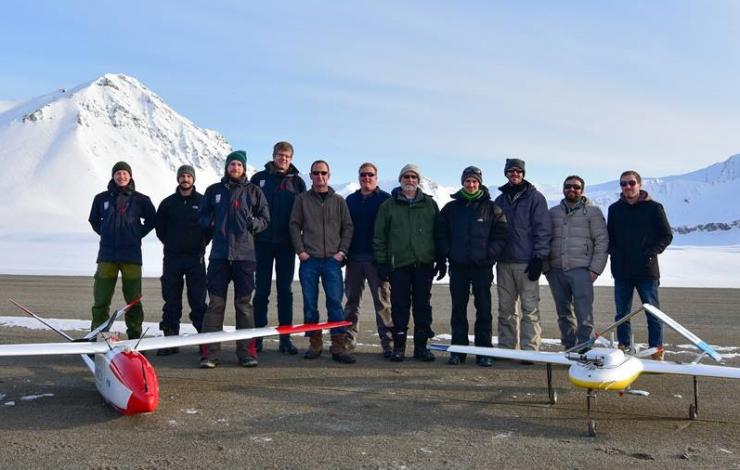
Kjell-Sture Johansen (NORUT), Dan Mock (AUV), Andreas TØllefsen (NORUT), Rune Storvold (NORUT), Scott Stalin (PMEL), Nick Delich (PMEL), Jim Johnson (PMEL), Hagen Teig (ESRL),Brad Hooper (AUV), Tej Dhakai (LDEO), and Scott Brown (LDEO) with partner groups after the final mission. Photo credit: Kjell-Sture Johansen

Kjell-Sture Johansen (NORUT), Dan Mock (AUV), Andreas TØllefsen (NORUT), Rune Storvold (NORUT), Scott Stalin (PMEL), Nick Delich (PMEL), Jim Johnson (PMEL), Hagen Teig (ESRL),Brad Hooper (AUV), Tej Dhakai (LDEO), and Scott Brown (LDEO) with partner groups after the final mission. Photo credit: Kjell-Sture Johansen
PMEL atmospheric chemists Trish Quinn and Tim Bates teamed up with other scientists and engineers to measure black carbon (soot) in the climate sensitive Arctic region. The scientists launched out of Ny-Ålesund, Norway using Mantas, an unmanned aerial systems (drones) to take measurements in the atmosphere, using a suite of sensors that could capture particle size and composition, light scattering properties and tracers that help detect the geographic origin of the particles. Scientists and engineers completed a total of 26 flights during this field season, in addition to sampling snow on the ground for black carbon deposition measurements. The data from flights and snow will help scientists better understand how black carbon is transported to the Arctic and to constrain its contribution to ice melt and warming in the Arctic.
For more information, read here about the 2015 field season and visit the Atmospheric Chemistry webpage.


